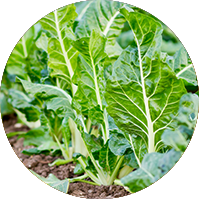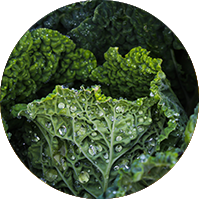Certified organic range
At Biostart, we have created an organic biological range that allows growers and farmers to activate and utilise microbes that are critical for plant health, growth and productivity, as well as forage preservatives for making top quality forage. Our range is certified by NASAA and BioGro as input for organic production.
What do you grow?
Tree crops, berries & citrus
Vegetables
Grapes & wine
Kiwifruit
Hay
Silage
Maize, cereals & grain crops
Pasture
Fodder crops
Select your interest area above to jump to the relevant section of this page, or scroll down if you’d like to see everything we offer for organic growers.
Our organic range
Our organic range
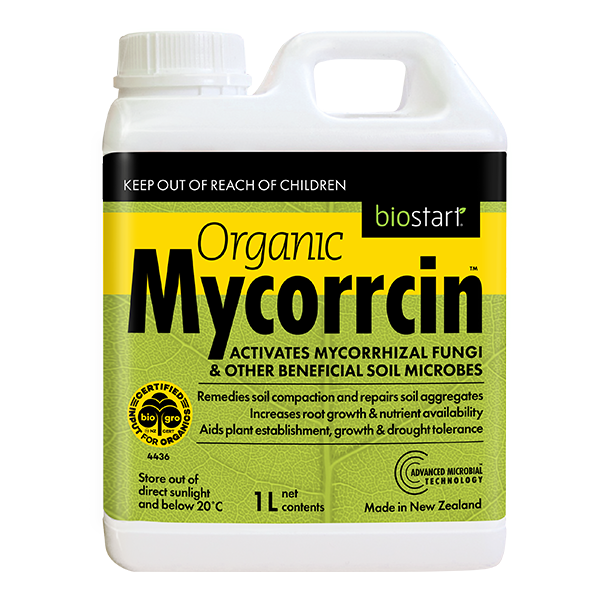 Organic MycorrcinImprove soil health by activating beneficial soil microbes and mycorrhizal fungi. Organic MycorrcinImprove soil health by activating beneficial soil microbes and mycorrhizal fungi. |
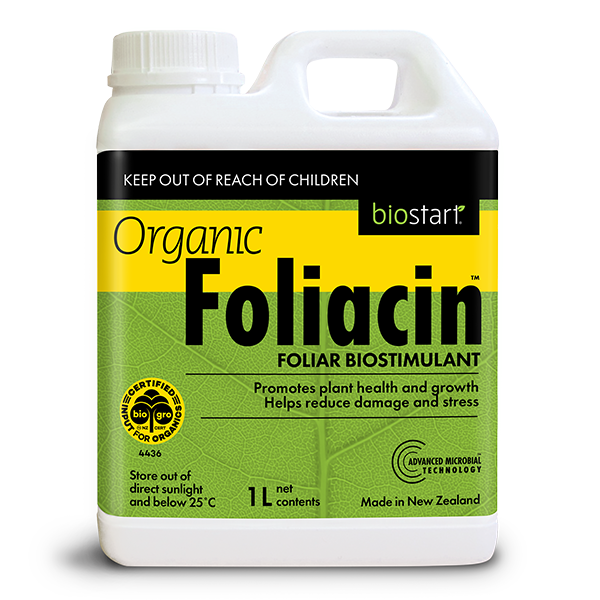 Organic FoliacinFoliar spray for improved plant health and resilience. Organic FoliacinFoliar spray for improved plant health and resilience. |
 Organic DigesterDecomposition product for faster plant breakdown and nutrient recycling. Organic DigesterDecomposition product for faster plant breakdown and nutrient recycling. |
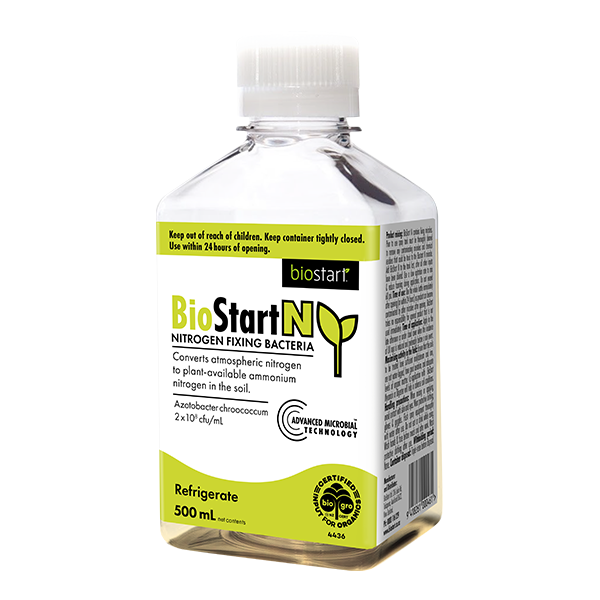 Biostart NOrganic biofertiliser utilising naturally occurring nitrogen-fixing bacteria. Biostart NOrganic biofertiliser utilising naturally occurring nitrogen-fixing bacteria. |
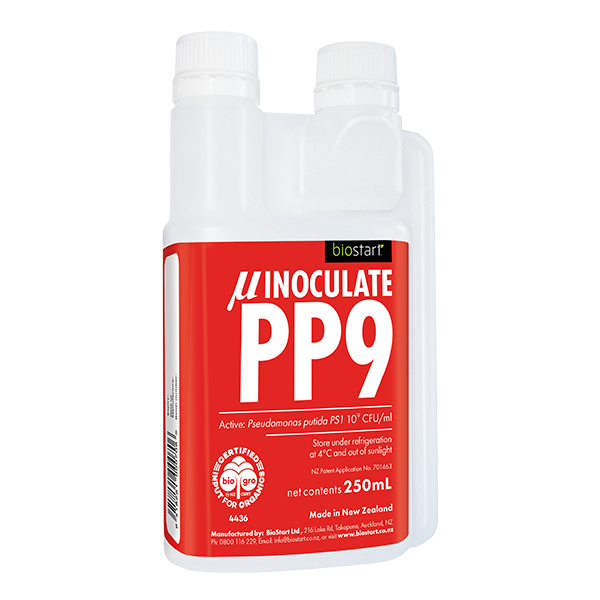 PP9Innoculant of the beneficial bacteria Pseudomonas putida, essential for healthy soil. PP9Innoculant of the beneficial bacteria Pseudomonas putida, essential for healthy soil. |
 BioShield®Biocontrol for safe, effective grass grub control. BioShield®Biocontrol for safe, effective grass grub control. |
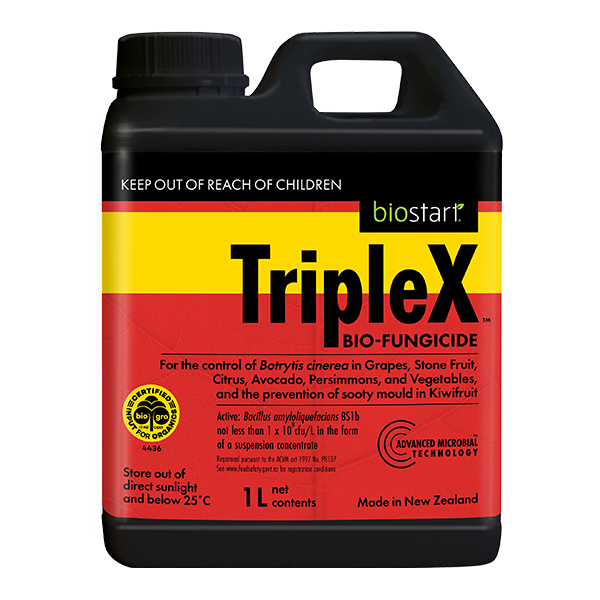 TripleXOrganic biocontrol agent for Botrytis, Sooty Mould and Sclerotinia. TripleXOrganic biocontrol agent for Botrytis, Sooty Mould and Sclerotinia. |
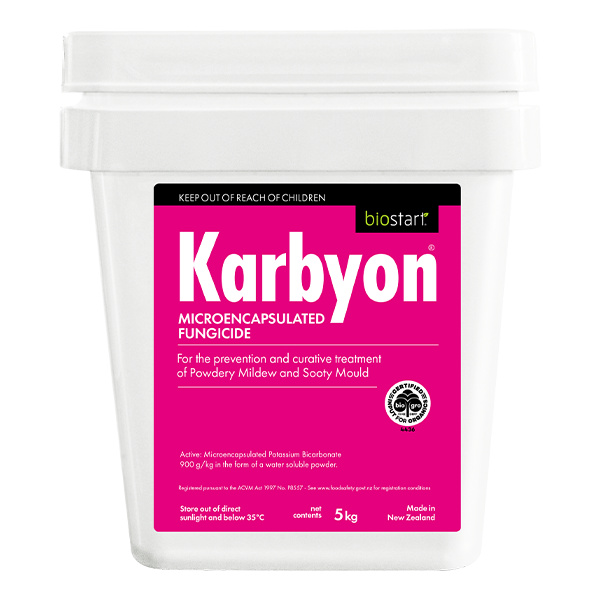 KarbyonGentle organic treatment for powdery mildew and sooty mould. KarbyonGentle organic treatment for powdery mildew and sooty mould. |
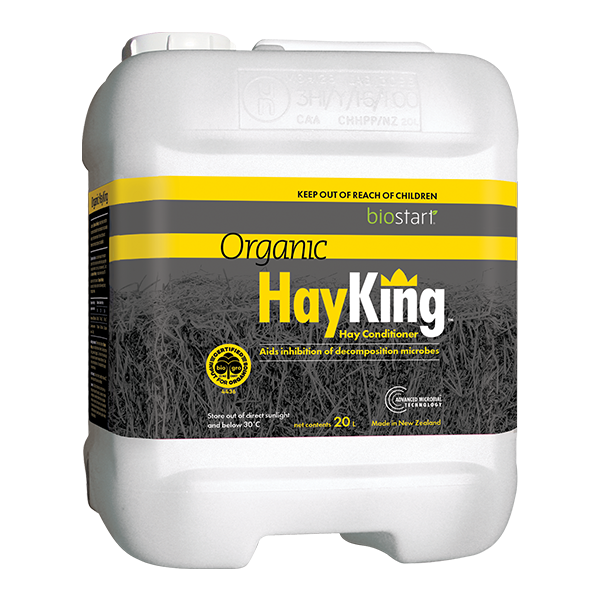 Organic HayKingOrganic hay preservative for mould control and high-quality feed Organic HayKingOrganic hay preservative for mould control and high-quality feed |
 Organic SilageKingOrganic silage additive for well preserved, high quality feed. Organic SilageKingOrganic silage additive for well preserved, high quality feed. |
Our organic range
Tree crops, berries and citrus
Growing healthy plants that produce good yields of high-quality fruit requires thriving soil and plant biology.
We have created a range of programmes that allow growers to achieve these results through activating naturally occurring soil and plant microbes that are critical for nutrient uptake and optimising plant health.
Our biostimulant products are compatible with nutritional and other applications so can be easily added into your current growing programme.
Evidence
The effect of Karbyon on a heavy infection of sooty mould on an orange tree.
The panel on the left is the untreated control, whereas the leaves in the right panel have been treated with Karbyon applied at 1% (two applications, 10 days apart). The top row is before treatment, the bottom row is after treatment.
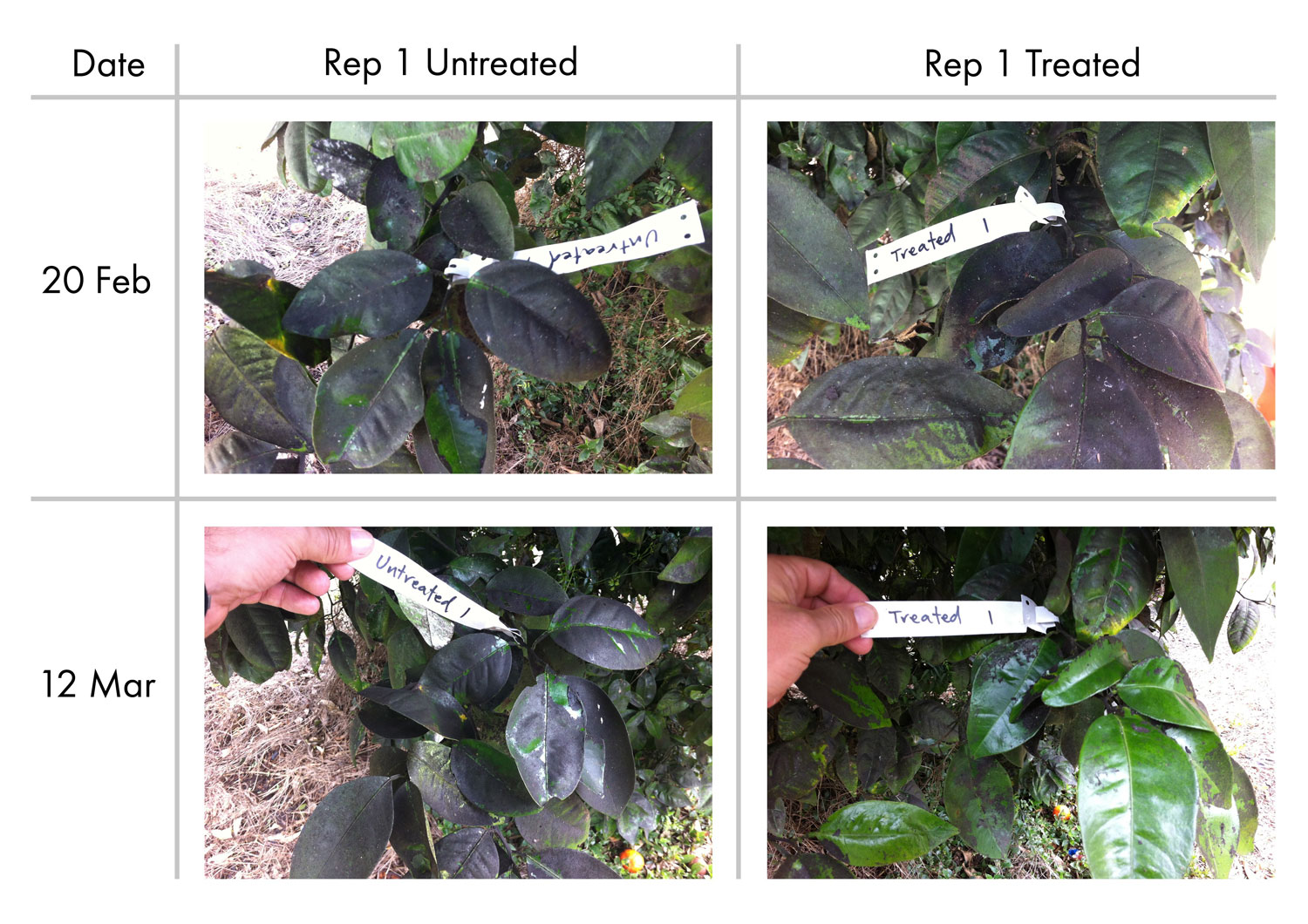
Our standard top fruit programme
For Apples, Stonefruit, Pipfruit, Berries, Avocados and Citrus
| Product | Timing | Application |
|---|---|---|
Organic Mycorrcin |
Prior to planting | Apply Organic Mycorrcin 2 L/ha to the planting strip. Follow up with the standard Organic Mycorrcin programme. |
| In early Spring | In early Spring apply 4 L/ha sprayed onto the soil. | |
| In the growing season | In the growing season apply 2 L/ha sprayed onto the soil with any nutritional sprays. | |
| In Autumn | In Autumn apply 4 L/ha sprayed onto the soil. | |
| At planting | Soak roots of all the plants for planting in a large container of 1:100 Organic Mycorrcin (10 mL/1 L per plant) solution for 20 minutes. Then add 1 L of 1:100 Organic Mycorrcin to the planting hole and plant the tree. | |
| Fertigation | For fertigation apply 1 L/ha/month added to irrigation system. | |
| First time use | Apply 6 L/ha sprayed onto the soil. | |
Organic Foliacin |
Early growth/first cover spray up to flowering, then after flowering up to harvest/late season | Apply 100 mL/100 L/ha of water with crop protection and/or nutritional spray applications. Re-apply every 10–14 days. |
| After periods of stress | Apply 200 mL/100 L i of water with crop protection and/or nutritional spray applications. Re-apply every 10–14 days. | |
Organic Digester |
At Autumn/post-harvest | Apply 4 L/ha in a minimum of 200 L of water applied over leaf litter and prunings to the soil. |
| For heavy disease over-wintering, cut-out diseased orchards, compacted or water-logged soil | Apply 6 L/ha in a minimum of 200 L of water. |
Our standard strawberry programme
| Product | Timing | Application |
|---|---|---|
Organic Mycorrcin |
At planting | Add 4 L/ha via the fertigation system. |
| From flowering to end of harvest | Apply 1 L/ha/fortnight through the fertigation system. | |
Organic Foliacin |
Early growth/first cover spray up to flowering, then after flowering up to harvest/late season | Apply 100 mL/100 L/ha of water with crop protection and/or nutritional spray applications. Re-apply every 10–14 days. |
| After periods of stress | Apply 200 mL/100 L/ha of water with crop protection and/or nutritional spray applications. Re-apply every 10–14 days. | |
Organic Digester |
At Autumn/post-harvest | Apply 4 L/ha in a minimum of 200 L of water applied over leaf litter and prunings to the soil. |
| For heavy disease over-wintering, cut-out diseased orchards, compacted or water-logged soil | Apply 6 L/ha in a minimum of 200 L of water. |
Organic Biofertiliser Programme
| Product | Timing | Application |
|---|---|---|
| Citrus | ||
Biostart N |
At spring root flush | Apply 200 mL/ha. |
| At autumn root flush | Apply 200 mL/ha. | |
| Pipfruit | ||
Biostart N |
At green tip | Apply 200 mL/ha. |
| Post-harvest | Apply 200 mL/ha. | |
| Stone fruit | ||
Biostart N |
At budbreak | Apply 100 mL/ha. |
| Post-flowering | Apply 200 mL/ha. | |
| Post-harvest | Apply 200 mL/ha. | |
Nursery programme
| Product | Timing | Application |
|---|---|---|
Organic Mycorrcin |
At planting | Soak root stocks in a 1:100 Organic Mycorrcin (1 L/100L water) solution for 20 minutes. |
| After planting | Apply 4 L/ha Organic Mycorrcin. | |
| Monthly | Apply Organic Mycorrcin 1 L/ha via fertigation system. |
Rescue Programmes
Having trouble with your crops? We have a variety of products and programmes to get you back on track. If you can’t spot what you need below, please contact your sales rep and we can sort out a solution tailored to your specific needs.
| Product | Timing | Application |
|---|---|---|
| Stress | ||
Organic Mycorrcin |
After stress | Apply 10 L/ha sprayed onto the soil. |
| Problem soil | ||
Organic Mycorrcin |
When needed | Apply 6 L/ha sprayed onto the soil. |
PP9 |
Early morning or late afternoon | 50 mL/ha, apply directly to orchard floor. Minimum water rate 200L/ha. |
| Grass grub programme | ||
BioShield® |
Between February and mid-April | Apply to actively feeding grass grub larvae when they are in the late second to mid-third instar stage of development. Dilute BioShield® in 100 L/ha of unchlorinated, clean water prior to application. Apply BioShield® at 1 L/ha via a liquid applicator fitted to a seed drill (e.g. triple disc or direct drill) to a depth of 10–30mm below soil surface. |
| Botrytis in Stone Fruit, Citrus, Avocado and Persimmons | ||
TripleX |
Prior to periods of disease pressure | Spray fortnightly on to fruit and foliage at a dilution rate of 500 mL/100 L water. |
| Powdery Mildew in berries, citrus and ornamentals | ||
Karbyon |
For prevention and control of low-level infections of powdery mildew | Apply 1 kg/100 L at 10–15-day intervals. |
| High disease pressure or severe powdery mildew infection | Apply 2 kg/100 L at 7–10 day intervals until disease is controlled. | |
| Sooty mould in citrus | ||
Karbyon |
For the prevention and control of low-level infections of sooty mould | Apply 1 kg/100 L at 10–15-day intervals. |
| When disease pressure is high or sooty mould infection is severe | Apply 2 kg/100 L at 7–10 day intervals until disease is controlled. | |
Vegetables
We have created a range of certified-organic products and programmes that allow growers to achieve these results through activating naturally occurring soil and plant microbes that are critical for nutrient uptake and optimising vegetable crop health.
We have programmes for a wide range of crops (including potatoes, brassicas, lettuce, pumpkin, squash, carrots, onions and kumara/sweet potatoes), taking you from seedling through to harvest. As well as covering common issues in the field, like problem soil and the management of Botrytis and powdery mildew.
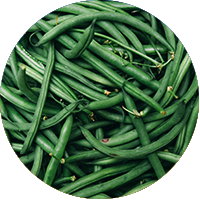 |
Reduce spray stress This brochure shows the effect of Organic Foliacin on green bean plants. Read more |
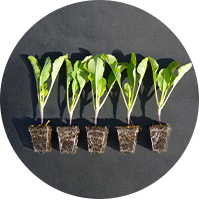 |
Vegetable Seedling Trial Trials on broccoli, lettuce and cauliflower seedlings treated with Organic Mycorrcin showed greater root development and bigger, sturdier and more uniform seedling size. Read more |
Standard certified organic vegetable programme
| Product | Timing | Application |
|---|---|---|
Organic Mycorrcin |
Seedling sowing | Treat seedling trays with a 0.5 L/tray of a dilute Mycorrcin Solution (1:100 or 1%). |
| Seedling planting | Apply 6 L/ha Organic Mycorrcin to the seed bed at sowing. | |
| Transplanting | Dip or drench in a solution of 1 part Organic Mycorrcin to 100 parts water. | |
| Planting/sowing | 6 L/ha sprayed onto the soil. | |
| Potatoes at planting | 6 L/ha in furrow. | |
Organic Foliacin |
Early growth/first cover spray through to harvest | 0.5 L/ha in a minimum of 200 L/ha of water with crop protection and/or nutritional spray applications. Re-apply every 10–14 days. |
| After periods of stress such as drought, extreme heat or phytotoxicity | 1 L/ha in a minimum of 200 L/ha of water with crop protection and/or nutritional spray applications. Re-apply every 10–14 days. | |
Organic Digester |
Cover crops at spray out, prior to planting | Apply Organic Digester at 4 L/ha in a minimum of 200 L/ha of water along with herbicide. |
Seedling programme
| Product | Timing | Application |
|---|---|---|
Organic Mycorrcin |
At sowing | Treat seedling trays with an Organic Mycorrcin and water mix of 0.5 L/tray of 1:100). |
| After planting | Apply 6 L/ha Organic Mycorrcin to the seed bed at planting. | |
| Transplanting | Dip or drench in a solution of 1 part Organic Mycorrcin to 100 parts water. |
Organic Biofertiliser Programme
| Product | Timing | Application |
|---|---|---|
Biostart N |
Sowing | Apply 100 mL/ha directly on to the soil. |
Rescue Programmes
Having trouble with your crops? We have a variety of products and programmes to get you back on track. If you can’t spot what you need below, please contact your sales rep and we can sort out a solution tailored to your specific needs.
| Product | Timing | Application |
|---|---|---|
| Botrytis | ||
TripleX |
Prior to periods of disease pressure | Apply 1.5 L/ha (500 mL/100 L). Re-apply every 14-21 days if disease pressure remains. |
| Powdery Mildew | ||
Karbyon |
For prevention and control of low-level infections of powdery mildew | Apply 3 kg/ha as 1 kg/100 L, then re-apply at 10–15-day intervals. |
| High disease pressure or severe powdery mildew infection | Apply 5 kg/ha as 2 kg/100 L, and re-apply at 7–10 day intervals until disease is controlled. | |
| Problem soil | Organic Mycorrcin |
When needed | Apply 6 L/ha sprayed onto the soil. |
PP9 |
Early morning or late afternoon | 50 mL/ha, apply directly to the soil. Minimum water rate 200L/ha. |
Grapes and wine
Using our biostimulants growers can activate naturally occurring soil and plant microbes that are critical for vine nutrient uptake, encouraging fast vine establishment, bigger cane size, higher vine resilience, and more consistent yields that produce better flavoured wines.
Plus, we also have programmes designed to help you through tough times, see below for how to recover after frost, tackle Botrytis and powdery mildew and what to do if grass grubs are damaging your vineyard.
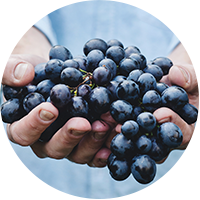 |
Karbyon Powdery Mildew Control Organic Grape Trial A single bud break application of Karbyon reduced the incidence of powdery mildew infection by 62% in late January Read more |
 |
Biostart N Organic Grape Programme Trial Biostart N was trialled on Merlot grapes in the Hawkes Bay, results included more bunches and higher bunch weight, leading to a 9% yield increase. Read more |
 |
Grass Grub Control in Vineyards This brochure explains what Bioshield does, how to check for grass grubs and a reference guide to tell different grubs and beetles apart. Read more |


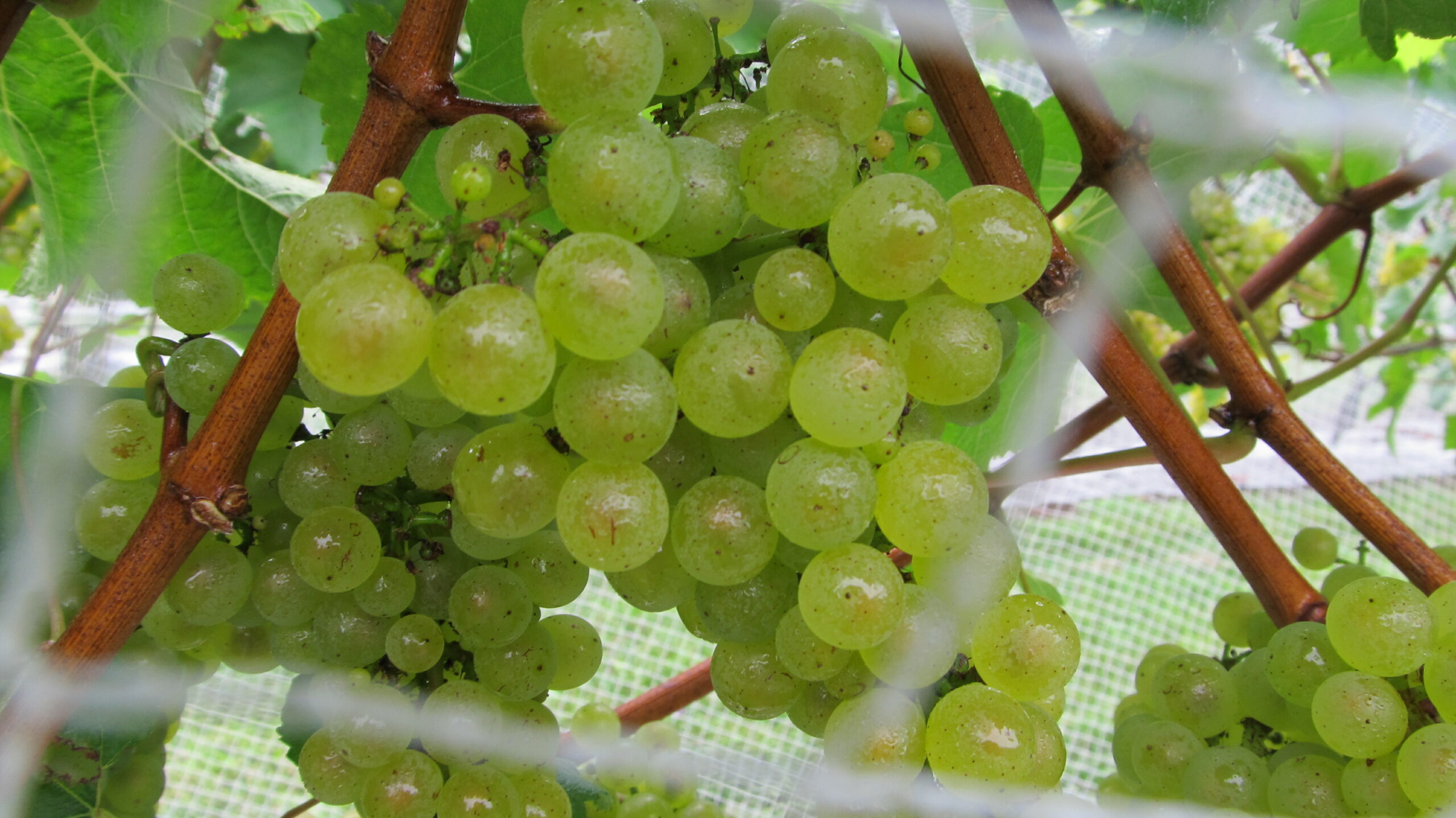
Premium grape programme
| Product | Timing | Application |
|---|---|---|
Organic Mycorrcin |
Bud break | Apply 10 L/ha under vine. |
Organic Foliacin |
Early growth/first cover spray up to flowering | 250 mL/100 L in a minimum of 200 L of water with crop protection and/or nutritional spray applications. Re-apply every 10–14 days. |
| After flowering and up to harvest | 100 mL/100 L in a minimum of 500 L of water with crop protection and/or nutritional spray applications. Re-apply every 10–14 days. | |
| After periods of stress | 200 mL/100 L in a minimum of 500 L of water with crop protection and/or nutritional spray applications. Re-apply every 10–14 days. | |
Organic Digester |
Post Harvest: From early autumn through to mulching in early winter | Apply 6 L/ha in a minimum of 200 L of water applied over leaf litter and prunings to the soil over the whole vineyard floor. If prunings are to be mulched then apply a total of 6 L/ha: in early autumn apply 4 L/ha on to prunings, and apply a further 2 L/ha after the prunings have been mulched. For heavy disease overwintering, cut-out diseased vines, compacted or water-logged soil apply 6L/ha |
Organic Biofertiliser Programme
| Product | Timing | Application |
|---|---|---|
Biostart N |
At bud break | Apply 200 mL/ha. For best results co-apply with Organic Mycorrcin. |
Frost recovery programme
| Product | Timing | Application |
|---|---|---|
Organic Mycorrcin |
Immediately | Immediately apply Mycorrcin at 5 L/sprayed ha (can be applied with weed spray or via fertigation system). |
| Ongoing | Then apply Mycorrcin via fertigation at 1 L/ha every month until harvest or at 2 L/ha with weed sprays. | |
Organic Foliacin |
10 days after frost | At 10 days after the frost apply Foliacin at 1 L/ha (can be applied with a cover spray). |
| At pea size | Apply Foliacin at 1 L/ha at pea size (can be applied with a cover spray). | |
| From veraison | Then from veraison apply Foliacin at 0.5 L/ha about every 14 days with cover sprays. | |
Organic Digester |
After harvest | After harvest apply Digester at 4 L/sprayed ha to activate decomposition microbes and stimulate breakdown of any residual grape mark. |
Rescue Programmes
| Product | Timing | Application |
|---|---|---|
| Botrytis | ||
TripleX |
Flowering 5 % and 80 % cap fall (E-L 20 and 25) | Spray at bunch line at a dilution rate of 500 mL/100 L water |
| Pre bunch closure (E-L 31 – 32) | Spray at bunch line at a dilution rate of 500 mL/100 L water | |
| Late season (E-L 35 – 38) | Spray at bunch line fortnightly at a dilution rate of 500 mL/100 L water. | |
| Powdery Mildew | ||
Karbyon |
For prevention and control of low-level infections of powdery mildew | Apply 1–2 kg/100 L at 10–15-day intervals. |
| High disease pressure or severe powdery mildew infection | Apply 2 kg/100 L at 7–10 day intervals until disease is controlled. | |
| Grass grub programme | ||
BioShield® |
February and mid-April | Apply to actively feeding grass grub larvae when they are in the late second to mid-third instar stage of development. Dilute BioShield® in 100 L/ha of unchlorinated, clean water prior to application. Apply BioShield® at 1 L/ha via a liquid applicator fitted to a seed drill (e.g. triple disc or direct drill) to a depth of 10–30mm below soil surface. |
Kiwifruit
Optimal soil and leaf biology created by the Biostart programme has been shown to lead to faster kiwifruit orchard establishment, higher graft take, increased cane growth and bud numbers, more resilient vines and higher and better-quality yields. We also have programmes for the management of sooty mould and problem soil.
 |
Prevent sooty mould and reduce your crop losses This flyer covers how TripleX works and includes trial data from four trial sites on Hayward kiwifruit and gold G3 kiwifruit in the Bay of Plenty, 2016. Read more |

Stephen McTurk is an organic kiwifruit grower and consultant, as well as a long-term user of Organic Mycorrcin. Stephen recommends Organic Mycorrcin to all the growers he consults with.
Standard kiwifruit programme
| Product | Timing | Application |
|---|---|---|
Organic Mycorrcin |
Prior to planting | Apply Organic Mycorrcin 2 L/ha to the planting area. Apply 1 L of 1:100 Organic Mycorrcin to the planting hole and plant the vine. Follow up with the standard Organic Mycorrcin program. 4 L/ha Apply 10 L/ha to turn around struggling blocks. |
| In early Spring at bud break | Apply 6 L/ha sprayed onto the soil. | |
| At blossom | Apply 4 L/ha sprayed onto the soil with weed spray. | |
| In Autumn after harvest | Apply 4 L/ha sprayed onto the soil. | |
| Rescue programme | For orchards under stress apply 10 L/ha sprayed onto the soil. Start the Standard Organic Mycorrcin Programme. | |
| First time use and problem soils | Apply 6 L/ha sprayed onto the soil. | |
Organic Foliacin |
Early growth/first cover spray up to flowering, then after flowering up to harvest/late season | Apply 100 mL/100 L in a minimum of 1,000 L/ha of water with crop protection and/or nutritional spray applications. Re-apply every 21-28 days. Target to make five applications over the growing season. Don’t apply over flowering. |
| After periods of stress | Apply 200 mL/100 L in a minimum of 1,000 L/ha of water with crop protection and/or nutritional spray applications. Re-apply every 21–28 days. | |
Organic Digester |
Autumn/Post-harvest; Post-pruning and/or leaf fall | Apply 6 L/ha in a minimum of 1,000 L of water applied over leaf litter and prunings to the soil. For heavy disease over-wintering, cut-out diseased orchards, compacted or water-logged soil: 8 L/ha in a minimum of 1,000 L of water. |
Organic Biofertiliser Programme
| Product | Timing | Application |
|---|---|---|
Biostart N |
Budbreak | Apply 100 mL/ha. |
| Post-flowering | Apply 200 mL/ha. | |
| Post-harvest | Apply 200 mL/ha. |
Our Sooty Mould programme
Sooty mould is a fungus that causes discolouration of kiwifruit. Use TripleX, which contains the microbe Bacillus amyloliquefaciens Bs1b, to reduce sooty mould’s ability to establish and develop. Read more about TripleX and sooty mould here.
| Product | Timing | Application |
|---|---|---|
TripleX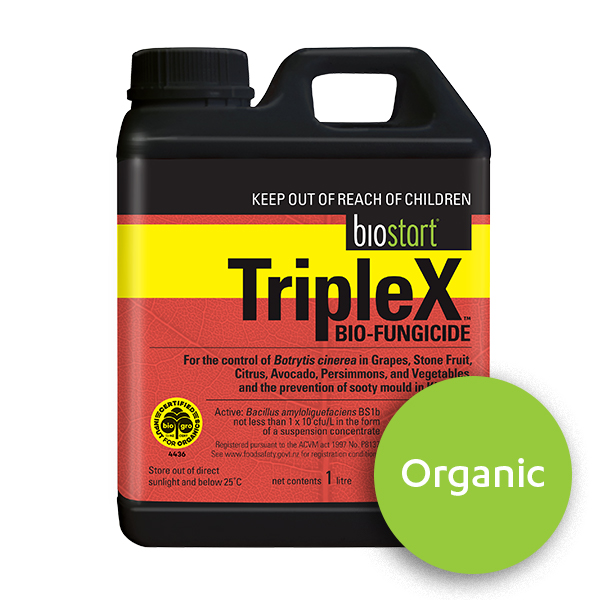 |
When passion vine hoppers and cicadas are active (early January to late March). | Spray 2–3 weekly intervals on to fruit and foliage. Apply a minimum of 3 L/ha diluted in 1,000 L water. A good super wetter (such as DuWett) should be used to ensure thorough fruit and stem coverage as this is where most sooty mould infections are located. |
Notes
TripleX is ACVM registered P8137 and certified organic.
For best results reduce cicada and PVH populations in the orchard and adjacent hedges, use a clean spray tank, and mix with non-chlorinated water.
Our Sclerotinia programme
The active ingredient in TripleX, the microbe Bacillus amyloliquefaciens Bs1b, reduces Sclerotinia’s ability to establish and develop by colonising the flowers and outcompeting the fungus. Read more here.
| Product | Timing | Application |
|---|---|---|
TripleX |
When kiwifruit (Hayward only) are at 80-90% flowering |
Apply to the flowers and foliage at a dilution rate of 150 mL/100L water to the point of run off. To ensure good coverage, add an approved super wetter/spreader at the recommended label rate and adjust application rates accordingly (call 0800 116 229 if uncertain of compatibility). |
Notes
TripleX is ACVM registered P8137 and certified organic.
Hay
Biostart Organic HayKing was designed specifically to maintain feed quality and reduce spoilage. Our approach to preserving hay focusses on activating beneficial bacteria, inhibiting yeast and spoilage fungi on the forage and improving the nutritive value of the hay.
 |
A new approach to preserving hay BioGro-Certified Organic HayKing helps inhibit the yeasts and moulds responsible for decomposition and spoilage, thereby aiding the preservation of hay and straw and improving storage and palatability. Read more |
Standard hay programme
| Product | Use | Application |
|---|---|---|
Organic HayKing |
Conventional small bales up to 35 kg | Moisture content below 21% 20 mL per bale. Moisture content 21-24% 25 mL per bale. |
| All other bales: Per tonne (1000kg) rate | Moisture content below 21% 500 mL/tonne. Moisture content 24% 700 mL/tonne. |
Silage
Our approach to preserving silage centres on activating the beneficial bacteria in grass, maize and cereal forage to produce ensiling lactic and acetic acid, as well as inhibiting the yeasts and fungi responsible for decomposition and spoilage, thereby maintaining the nutritive quality of the forage.
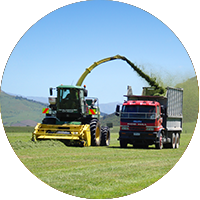 |
Organic SilageKing is made in New Zealand for New Zealand farmers Developed to promote grass, maize and cereal silage preservation with a blend of fermentation extracts and nutrients. Read more |
Standard silage programme
| Product | Use | Application |
|---|---|---|
Organic SilageKing |
Pasture, cereal, lucerne and maize silage | Apply 150 mL/wet tonne |
Maize, cereals and grain crops
Our approach to maize, cereal and grain crops revolves around biologically enriching soil with Organic Mycorrcin and Biostart N, so you can grow nutrient-dense crops, then using Organic Digester to break down crop trash and recycle nutrients and organic matter back into the soil.
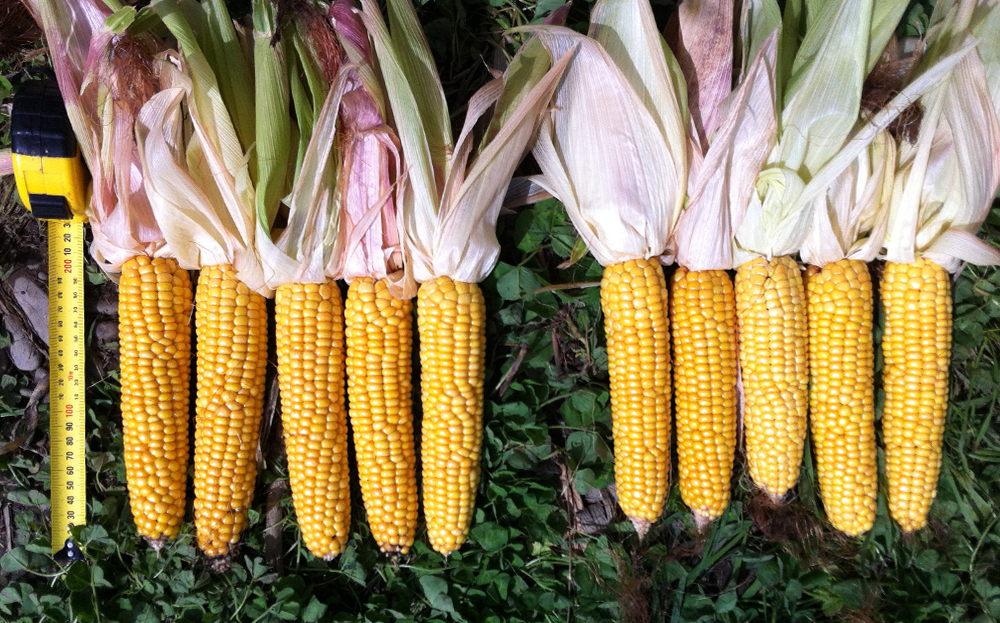
Standard maize programme
| Product | Use | Application |
|---|---|---|
Organic Mycorrcin |
Maize, cereal, pulse, oil seed and fibre crops | At sowing, apply 2 L/ha sprayed onto the soil. For problem soils apply 4 L/ha in 200 L of water. Co-apply with 10 mL/ha BioStart N, N-fixing bacteria for sustained plant growth. |
Organic Digester |
Post-harvest Maize and Cereal Silage | Post-harvest apply 2 L/ha in a minimum 200 L of water to the soil during or after stubble incorporation. |
| Post-harvest Maize grain, cereal grains, pulses and oil seed crops | Post-harvest apply 4 L/ha in a minimum of 200 L of water to soil during or after stubble incorporation. |
Organic Biofertiliser Programme
| Product | Timing | Application |
|---|---|---|
Biostart N |
Maize, pulse, oil seed and cereal crops, post-harvest crop trash | Apply 100 mL/ha directly on to the soil during or after crop trash incorporation. For best results co-apply with Organic Mycorrcin. |
| Maize and green feed crops at sowing | Apply 100 mL/ha directly on to the soil. For best results co-apply with Organic Mycorrcin. |
Cereal Powdery Mildew Programme
| Product | Timing | Application |
|---|---|---|
| Powdery mildew for cereals | ||
Karbyon |
For prevention and control of low-level infections | Apply 3 kg/100 L at 10–15-day intervals. |
| High disease pressure or severe infection | Apply 5 kg/100 L at 7–10 day intervals until disease is controlled. | |
Pasture
Our pasture programme allows you to grow nutrient-dense pasture by biologically enriching the soil using Organic Mycorrcin and Biostart N in spring, and using Digester in winter to recycle nutrients back to the soil. We also have a biological control for NZ grass grubs in pasture.
 |
Pasture trial sheet An independent pasture trial was conducted in Spring 2020, it found that applying Biostart N and Mycorrcin led to greater long term pasture growth while reducing the amount of urea required by half, over a four month period. Read more |
Standard pasture programme
| Product | Timing | Application |
|---|---|---|
Organic Mycorrcin |
Spring and Autumn, 6–8 weeks prior to required increase in pasture production. | After grazing apply 2 L/ha in 200 L of water sprayed onto pasture. Co-apply 100 mL/ha BioStart N, N-fixing bacteria for sustained plant growth. |
Organic Digester |
In Spring or Autumn | Apply 3 L/ha on to browntop trash affected pastures in a minimum of 200 L of water. For helicopter applications the minimum water rate is 40 L/ha. |
Organic Biofertiliser Programme
| Product | Timing | Application |
|---|---|---|
Biostart N |
New pasture at sowing | Apply 100 mL/ha directly on to the soil. |
| Established pasture in spring | Immediately after grazing apply 100 mL/ha. |
Grass Grub Programme
| Product | Timing | Application |
|---|---|---|
| Grass grub programme | ||
BioShield® |
For grass grubs – February and mid-April | Apply to pastures when there are actively feeding grass grub larvae in the late second to mid-third instar stage of development. Dilute BioShield® in 100 L/ha of unchlorinated, clean water prior to application. Apply BioShield® at 1 L/ha via a liquid applicator fitted to a seed drill (e.g. triple disc or direct drill) to a depth of 10–30mm below soil surface. |
Fodder crops
We believe that healthy plants start with healthy soil. So we suggest using Organic Mycorrcin and Biostart N, to encourage biologically thriving soil.
After harvest, Organic Digester is a great option to rapidly break down crop trash and recycle organic matter and nutrients back into the soil.
We also have a solution for powdery mildew in fodder beet and forage brassica.
Standard fodder crop programme
| Product | Timing | Application |
|---|---|---|
Organic Mycorrcin |
Sowing | Apply 2 L/ha sprayed onto the soil. For problem soils apply 4 L/ha in 200 L of water. Co-apply with 100 mL/ha BioStart N, N-fixing bacteria for sustained plant growth. |
Organic Digester |
Post-harvest crop trash break down | Apply 4 L/ha in a minimum of 200 L of water applied over crop trash to the soil. |
Organic Biofertiliser Programme
| Product | Timing | Application |
|---|---|---|
Biostart N |
Sowing | Apply 100 mL/ha directly on to the soil. For best results co-apply with Organic Mycorrcin. |
| Crop trash | Apply 100 mL/ha directly on to the soil during or after crop trash incorporation. For best results co-apply with Organic Digester. |
Powdery Mildew Programme
| Product | Timing | Application |
|---|---|---|
| Powdery Mildew in fodder beet and forage brassica | ||
Karbyon |
For prevention and control of low-level infections | Apply 2.5 kg/ha as 1kg/100 L repeat at 10–15-day intervals. |
| High disease pressure or severe infection | Apply 5 kg/ha as 2 kg//100 L repeat at 7–10 day intervals until disease is controlled. | |
Ready to get started?
Contact us for personalised advice or find out where you can buy Biostart products:














